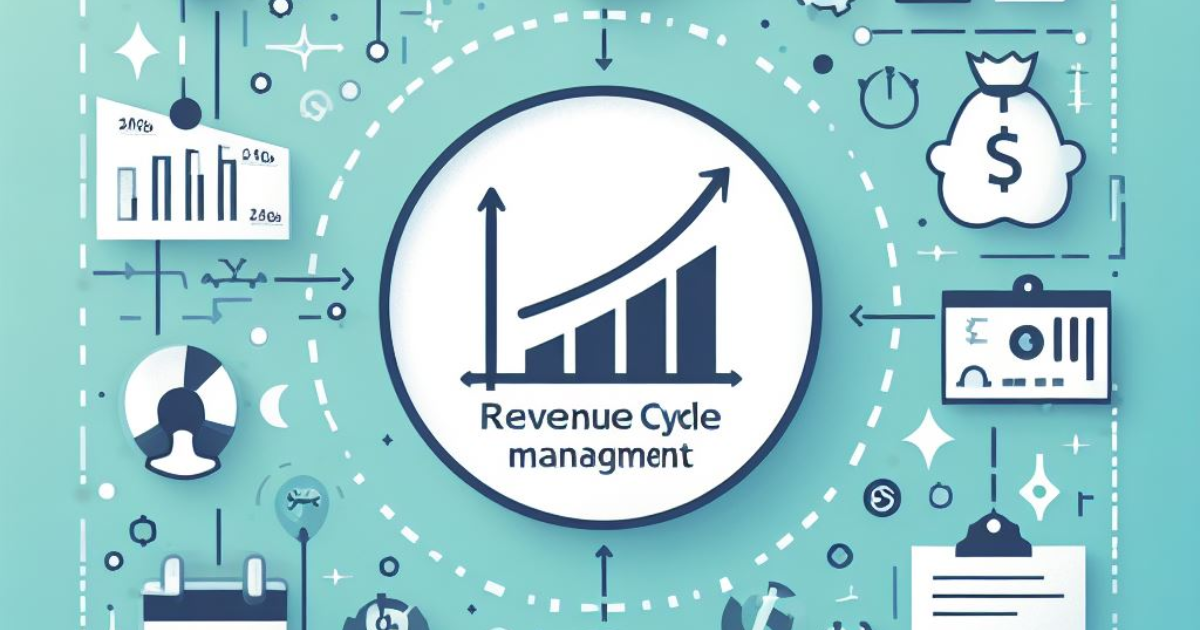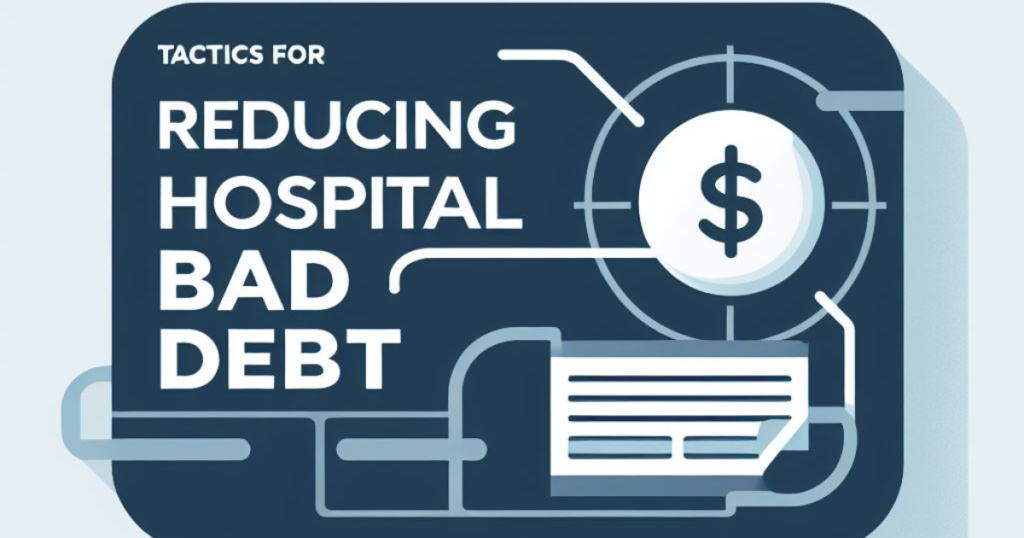
In the world of healthcare, optimizing revenue is crucial for sustainable operations. Revenue Cycle Management (RCM) plays a pivotal role in this process, empowering healthcare providers to maximize their financial performance. By streamlining and optimizing various aspects of the revenue cycle, RCM ensures efficient billing, accurate coding, and timely reimbursement. This article explores the crucial role of RCM in healthcare revenue optimization and uncovers how it enables organizations to thrive financially while delivering quality patient care.
- RCM, or Revenue Cycle Management, is a strategic process that healthcare organizations use to optimize their revenue by effectively managing the financial aspects of patient care. It involves the coordination of various administrative and clinical functions, such as patient registration, coding, billing, and reimbursement. RCM plays a crucial role in healthcare revenue optimization as it ensures that healthcare providers receive timely and accurate payments for the services they provide.
- RCM is considered crucial in optimizing healthcare revenue because it helps healthcare organizations maximize their financial performance and improve overall profitability. By implementing effective RCM strategies, healthcare providers can streamline their revenue cycle processes, reduce revenue leakage, and enhance reimbursement rates. It enables organizations to identify and address potential bottlenecks in the revenue cycle, improve cash flow, and minimize claim denials. Ultimately, RCM empowers healthcare organizations to achieve financial sustainability and invest in providing high-quality patient care.
- RCM empowers healthcare organizations to optimize their revenue through various means. Firstly, it helps automate and streamline administrative processes, reducing manual errors and improving efficiency. This includes automating patient registration, insurance verification, coding, and claims submission. Secondly, RCM provides real-time visibility into the revenue cycle, allowing organizations to track and monitor key performance indicators (KPIs) and identify areas for improvement. It enables proactive management of denials, underpayments, and other revenue leakage issues. Lastly, RCM leverages technology and data analytics to identify trends, patterns, and opportunities for revenue optimization, enabling organizations to make informed decisions and implement targeted strategies.
- The key components of RCM that play a significant role in revenue optimization include patient registration and eligibility verification, accurate and timely coding and documentation, efficient claims submission and management, proactive denial management and appeals, and effective reimbursement and revenue analysis. Each component is interconnected and relies on accurate data, streamlined processes, and effective communication between various stakeholders, including healthcare providers, payers, and patients. By optimizing each component, healthcare organizations can enhance their revenue cycle and maximize financial outcomes.
- Healthcare organizations face several challenges in implementing effective RCM strategies. These include complex regulatory requirements, evolving reimbursement models, interoperability issues, limited resources and expertise, and resistance to change. Adapting to changing regulations and reimbursement models can be challenging, requiring continuous training and education for staff. Interoperability issues between different systems and stakeholders can hinder the flow of information and create inefficiencies. Limited resources and expertise may result in inadequate technology infrastructure and insufficient staff to manage the revenue cycle effectively. Overcoming these challenges requires a comprehensive approach that includes technology investments, staff training, and collaboration with industry partners.
- Technology plays a crucial role in enhancing the effectiveness of RCM in revenue optimization. Advanced RCM systems leverage automation, artificial intelligence, and machine learning to streamline administrative processes, improve coding accuracy, and identify potential revenue opportunities. Electronic health record (EHR) systems and billing software enable seamless integration of patient data, coding, and claims submission. Data analytics and reporting tools provide real-time visibility into the revenue cycle, enabling organizations to track KPIs, identify trends, and make data-driven decisions. Technology also enhances communication and collaboration between healthcare providers, payers, and patients, facilitating smoother revenue cycle management.
- RCM supports healthcare organizations in maximizing their reimbursement rates by ensuring accurate coding and documentation, timely claims submission, and proactive denial management. By accurately coding diagnoses and procedures, organizations can justify the services provided and ensure appropriate reimbursement. Timely claims submission and proactive denial management help organizations avoid payment delays and denials, maximizing cash flow and revenue. RCM also helps organizations stay updated with the latest reimbursement policies and negotiate favorable contracts with payers, further optimizing reimbursement rates.
- Implementing a robust RCM system in healthcare can yield various financial benefits for organizations. These include increased revenue and cash flow, reduced claim denials and underpayments, improved collection rates, decreased administrative costs, and enhanced financial stability. By optimizing the revenue cycle, healthcare organizations can minimize revenue leakage, expedite claims processing, and improve reimbursement rates. This leads to increased revenue and cash flow, enabling organizations to invest in technology, infrastructure, and patient care. Additionally, by streamlining administrative processes and reducing manual errors, organizations can lower administrative costs and improve overall financial stability.
- RCM helps healthcare providers streamline their billing and coding processes by automating manual tasks, improving coding accuracy, and ensuring compliance with regulatory requirements. Advanced RCM systems integrate with EHRs and billing software to streamline the flow of patient data, eliminating the need for manual data entry. This reduces errors and improves efficiency. RCM also provides coding guidelines and documentation requirements, ensuring accurate and compliant coding practices. By streamlining billing and coding processes, healthcare organizations can expedite claims submission, minimize rejections, and improve overall revenue cycle efficiency.
- Best practices for healthcare organizations to ensure a successful RCM implementation include conducting a thorough assessment of current processes and systems, setting clear goals and objectives, investing in technology and training, establishing effective communication and collaboration channels, and continuously monitoring and evaluating performance. Conducting a thorough assessment helps organizations identify gaps and areas for improvement. Setting clear goals and objectives ensures alignment with organizational priorities. Investing in technology and training enables organizations to leverage advanced RCM systems and equip staff with the necessary skills. Establishing effective communication and collaboration channels facilitates efficient revenue cycle management. Continuous monitoring and evaluation of performance enable organizations to identify and address issues promptly, ensuring ongoing success.
- RCM aligns with the broader goals of healthcare organizations in terms of financial sustainability and growth by optimizing revenue, improving cash flow, and enhancing profitability. By effectively managing the revenue cycle, healthcare organizations can ensure timely and accurate reimbursement for the services they provide, maximizing revenue. Improved cash flow enables organizations to invest in technology, infrastructure, and patient care, supporting financial sustainability. RCM also helps organizations identify opportunities for growth by analyzing data, identifying trends, and implementing targeted strategies. By optimizing revenue and financial outcomes, RCM enables healthcare organizations to achieve their broader goals of providing high-quality patient care and driving organizational growth.
In conclusion, Revenue Cycle Management (RCM) plays a crucial role in empowering healthcare organizations to optimize their revenue. By effectively managing the financial aspects of patient care, RCM helps healthcare providers maximize their financial performance, improve profitability, and achieve financial sustainability. Through automation, real-time visibility, and data analytics, RCM streamlines administrative processes, reduces revenue leakage, enhances reimbursement rates, and improves overall revenue cycle efficiency. By implementing robust RCM strategies and leveraging technology, healthcare organizations can increase revenue, reduce claim denials and underpayments, improve collection rates, decrease administrative costs, and enhance their financial stability. Ultimately, RCM enables healthcare providers to invest in providing high-quality patient care while driving organizational growth.If you’re looking to optimize your healthcare organization’s revenue and streamline your financial processes, consider partnering with our expert RCM services. Contact us today to learn how we can help you achieve greater financial efficiency and sustainability.






